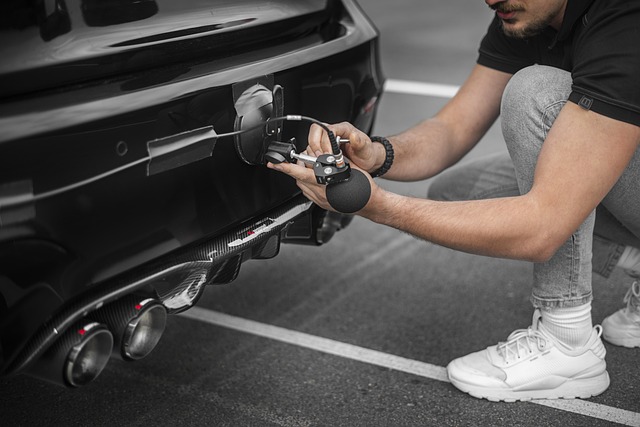Navigating the process of vehicle title transfers can be a complex endeavor, particularly when differentiating between salvage and rebuilt titles. This article demystifies the key aspects of handling such transactions, with a focus on the nuances of transferring a rebuilt title. Understanding the distinction between a salvage title, which marks a vehicle as irreparably damaged, and a rebuilt title, signifying a car that has been meticulously restored to roadworthiness, is essential for both buyers and sellers. Whether you’re looking to transfer a rebuilt title or prepare to sell your restored vehicle, this guide will provide a comprehensive overview of the necessary steps and documentation. From understanding the inspection requirements to grasping the legal implications, we’ll cover everything from how to transfer a rebuilt title to the essential paperwork needed for a seamless transaction. With these insights, you can confidently manage the process and ensure compliance with state regulations.
Navigating Rebuilt Title Transfers: A Step-by-Step Guide on How to Transfer a Rebuilt Title

When transferring a rebuilt title, it’s imperative to adhere to specific steps and paperwork requirements to ensure the process is legal and compliant with state regulations. The first step involves gathering all necessary documentation, which typically includes a completed application for a rebuilt title, proof of ownership such as the original title or bill of sale, a police report if applicable, and detailed records of repairs made to the vehicle. These records should be extensive, detailing the nature of the repair, the parts used, and labor costs incurred. Additionally, a salvage certificate must be presented to confirm the vehicle’s previous status.
Once all paperwork is compiled, the next phase is submitting it to the relevant Department of Motor Vehicles (DMV) along with the rebuilt title application fee. The application will undergo review, and upon approval, a rebuilt title will be issued. It’s crucial to ensure that all repair information is accurate and complete; discrepancies or omissions can delay the process or even invalidate the rebuilt title. After obtaining the rebuilt title, the vehicle must pass a rigorous inspection to verify that it meets safety and operational standards. This inspection ensures that the vehicle is indeed roadworthy and safe for the new owner. Upon successful inspection, the rebuilt title transfer can be completed, allowing for sale or registration under the new title status. Sellers should be transparent about a car’s history and provide all necessary documentation to the buyer to facilitate a smooth transfer of a rebuilt title vehicle. By following these steps meticulously, buyers and sellers can navigate the process of transferring a rebuilt title with confidence and compliance.
Essential Rebuilt Title Transfer Paperwork: What You Need for a Seamless Transaction

When transferring a rebuilt title, it’s imperative to gather all necessary documentation to facilitate a seamless transaction. The first step involves acquiring a rebuilt title from the state’s Department of Motor Vehicles (DMV). This typically necessitates submitting proof of salvage title cancellation, a notarized statement detailing the repairs made, and a list of replaced or repaired parts, along with their manufacturers’ identification numbers. Additionally, you must provide evidence that the vehicle has passed all required inspections to ensure it meets road safety standards. These inspections might include assessments by an authorized inspection station or a certified mechanic who can vouch for the vehicle’s structural integrity and functionality.
Once the repairs are verified and the vehicle passes inspection, the next phase of the rebuilt title transfer process involves completing state-specific forms. These often include a Bill of Sale, an Application for Title and Registration, and any necessary affidavits that declare the vehicle’s salvage history. Buyers must also provide personal identification documents, proof of insurance, and possibly pay a reinstatement fee or title transfer fee to finalize the transaction. Sellers, on their end, should prepare the current title with a notational indication that the vehicle has been rebuilt, along with any supporting documentation that substantiates the completion of repairs. Throughout this process, it’s essential to adhere strictly to the state’s guidelines for selling a car with a rebuilt title and to ensure the title transfer for salvage-to-rebuilt cars is handled correctly to avoid any legal complications.
Selling Your Vehicle with a Rebuilt Title: Inspection Requirements and Legal Considerations

When preparing to sell a vehicle with a rebuilt title, it’s imperative to comply with the specific legal framework governing such transactions. The process begins with ensuring that the vehicle meets the inspection requirements set forth by your state’s Department of Motor Vehicles (DMV). These inspections verify that the car has been restored to safe driving conditions and that all necessary repairs have been executed according to regulations. Typically, a certified mechanic must conduct this evaluation, and the results, along with a detailed report of the work performed, should be documented for your records and provided to potential buyers.
Sellers must also navigate the rebuilt title transfer paperwork requirements, which can vary by state. This involves submitting the proper forms, such as an Application for Title and Registration, along with evidence of the vehicle’s previous salvage status and proof that it has been successfully rebuilt. Additionally, buyers in many jurisdictions are entitled to a clear history of the vehicle’s past, including its salvage title designation and the nature of the repairs made. Sellers should be prepared to furnish this information upon request to facilitate a smooth transfer of ownership. Understanding how to transfer a rebuilt title is not only a legal obligation but also ensures that both parties are fully aware of the vehicle’s history before the transaction is completed.
When concluding the article on vehicle title transfers, particularly concerning the transition from salvage to rebuilt titles, it’s crucial to highlight the importance of adhering to the process. A rebuilt title signifies a vehicle’s successful transformation from an accident-affected state into a safe and legal roadworthy condition. The article has outlined the necessary steps and documentation for a smooth transfer of a rebuilt title, ensuring compliance with state regulations. For those looking to sell a car with a rebuilt title, understanding the inspection requirements and legal considerations is paramount. By following the guide on navigating rebuilt title transfers, vehicle owners can confidently complete this process, knowing they have fulfilled all necessary protocols. In summary, the key takeaway for anyone involved in transferring a rebuilt title is to meticulously prepare the required paperwork and ensure the vehicle passes the specified inspections before proceeding with the transaction. This due diligence protects both parties and confirms the car’s compliance with state laws regarding roadworthy vehicles, facilitating a secure and legitimate transfer of ownership.



